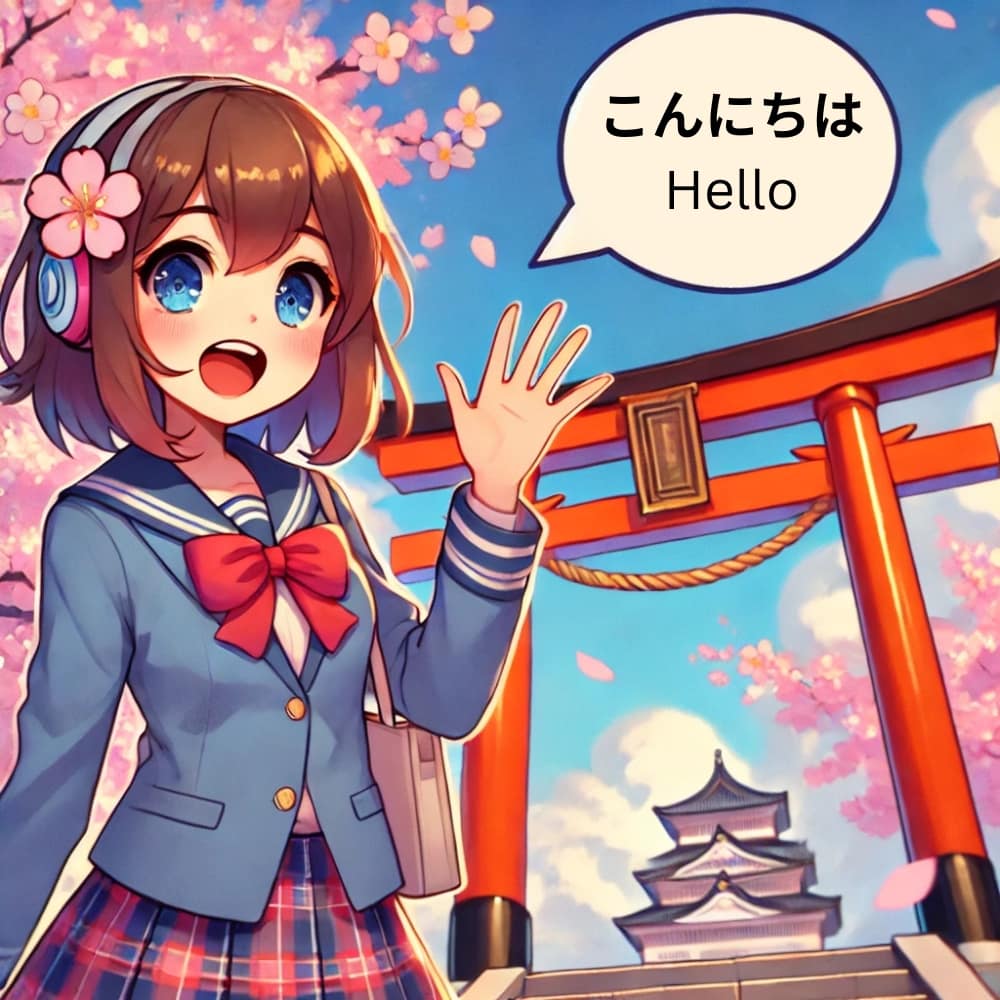How to Say “Hello” in Japanese: A Comprehensive Guide for Beginners
If you’ve ever wanted to dive into the fascinating world of the Japanese language, you’ve probably wondered: How do I say hello in Japanese? Well, spoiler alert—there’s more than one way! Whether you’re greeting a friend, meeting a business partner, or saying hello on a phone call, Japan’s rich culture emphasizes context, and so do its greetings.
In this post, we’ll break down the common ways to say “hello” in Japanese, explain when to use each one, and share helpful tips to ensure you’re culturally appropriate while doing so.

1. The Classic “Hello” in Japanese: こんにちは (Konnichiwa)
The word こんにちは (konnichiwa) is the most widely recognized way to say “hello” in Japanese. However, it’s not a one-size-fits-all greeting. Here’s when and how to use it:
- Meaning: It translates to “good afternoon” and is typically used during the daytime.
- Usage: Formal and polite, konnichiwa works well in most situations, whether you’re meeting someone for the first time or greeting a colleague.
- Pronunciation Tip: Break it down into syllables: kon-ni-chi-wa.
Example:
- You meet a shopkeeper in Tokyo at 1 PM.
- You say: こんにちは (konnichiwa).
- They reply: こんにちは (konnichiwa).
2. Morning Greetings: おはよう (Ohayou) and おはようございます (Ohayou Gozaimasu)
If it’s before noon, you wouldn’t use konnichiwa. Instead, go for:
- Casual: おはよう (ohayou) – Perfect for friends and family.
- Polite: おはようございます (ohayou gozaimasu) – Ideal for formal situations, like greeting a teacher or colleague.
Example:
- Greeting your coworker at 9 AM:
- You say: おはようございます (ohayou gozaimasu).
3. Evening Greetings: こんばんは (Konbanwa)
As the sun sets, konnichiwa gives way to こんばんは (konbanwa), which means “good evening.” Use this to greet someone at night in both casual and formal contexts.
Example:
- Saying hello to a host at a dinner party at 7 PM:
- You say: こんばんは (konbanwa).
4. Phone Call Greetings: もしもし (Moshi Moshi)
Unique to Japanese, もしもし (moshi moshi) is used exclusively to say “hello” on the phone. Whether you’re answering or initiating a call, this greeting is informal and universally understood.
Example:
- Answering the phone:
- You say: もしもし (moshi moshi).
5. Casual “Hi” or “Hey”: やあ (Yaa) and よ (Yo)
When chatting with close friends, these ultra-casual greetings come in handy:
- やあ (yaa): A friendly “hi.”
- よ (yo): Even more relaxed, akin to “hey!”
Example:
- Meeting a buddy:
- You say: よ (yo), 元気? (genki?, meaning “How are you?”).
6. Polite and Formal Greetings: ごきげんよう (Gokigenyou)
Although rare in everyday use, ごきげんよう (gokigenyou) is an ultra-polite greeting, often heard in formal settings or historical dramas.
Cultural Insights: Greetings in Japan
Understanding when to say “hello” in Japanese goes beyond words—culture plays a big role!
- Bow While Greeting: A slight bow shows respect and is an important part of Japanese etiquette.
- Time Matters: Use the appropriate greeting based on the time of day to show cultural awareness.
- Use Politeness Levels: Always err on the side of politeness when unsure.
Common FAQs About Saying “Hello” in Japanese
Q1: Can I use “konnichiwa” in the morning or at night?
No, use ohayou gozaimasu in the morning and konbanwa at night. Konnichiwa is best reserved for the afternoon.
Q2: How do I greet a group of people?
Bow slightly and use the appropriate greeting for the time of day. For example, say konnichiwa with a friendly tone.
Q3: What’s the difference between “ohayou” and “ohayou gozaimasu”?
Ohayou is casual and used with friends or family, while ohayou gozaimasu is polite and suitable for formal interactions.
Practice Makes Perfect!
Now that you know how to say “hello” in Japanese, it’s time to put your skills to the test. Start using these greetings in conversations, whether with native speakers or in your language practice. And remember, learning Japanese is about more than just words—it’s about immersing yourself in a culture that values respect, politeness, and connection.